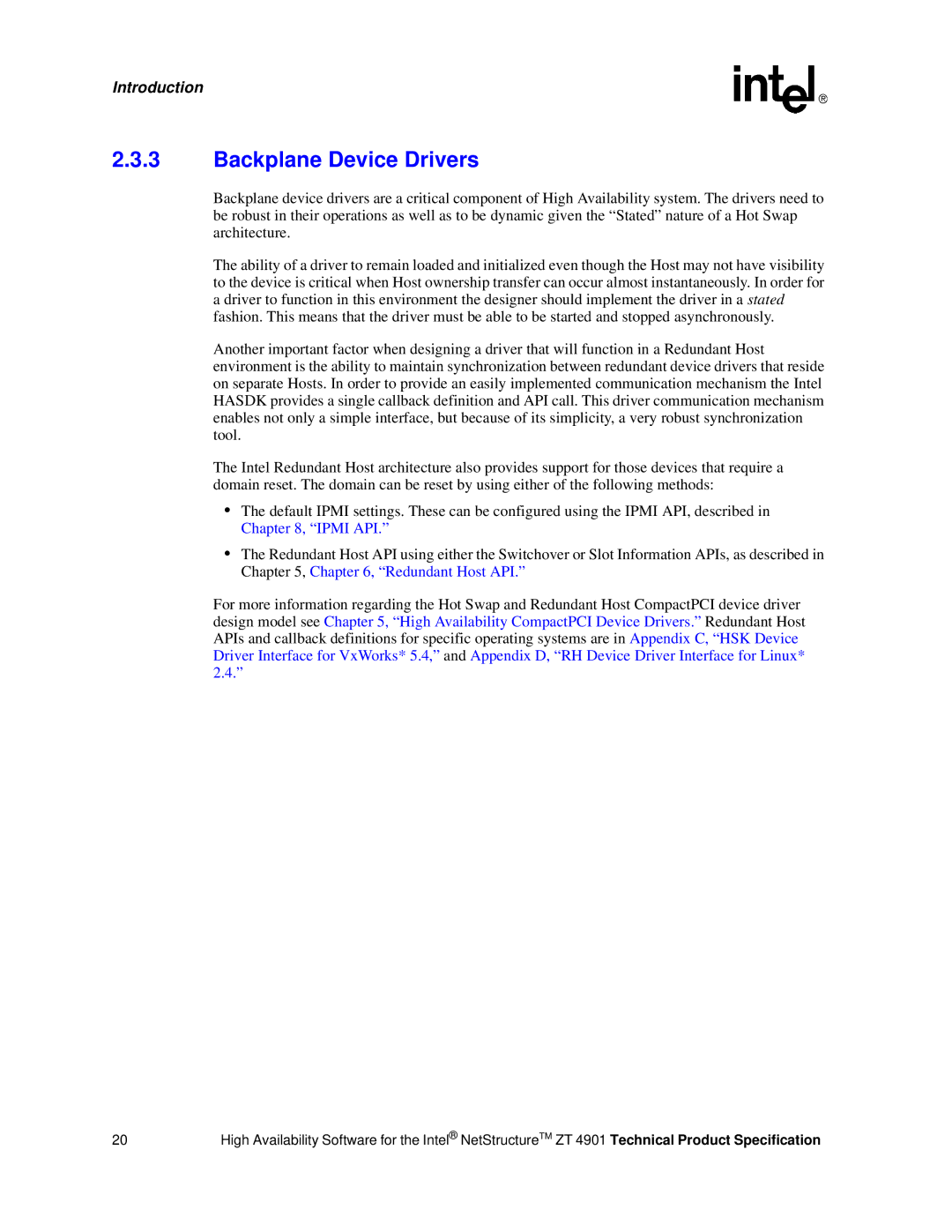Introduction
2.3.3Backplane Device Drivers
Backplane device drivers are a critical component of High Availability system. The drivers need to be robust in their operations as well as to be dynamic given the “Stated” nature of a Hot Swap architecture.
The ability of a driver to remain loaded and initialized even though the Host may not have visibility to the device is critical when Host ownership transfer can occur almost instantaneously. In order for a driver to function in this environment the designer should implement the driver in a stated fashion. This means that the driver must be able to be started and stopped asynchronously.
Another important factor when designing a driver that will function in a Redundant Host environment is the ability to maintain synchronization between redundant device drivers that reside on separate Hosts. In order to provide an easily implemented communication mechanism the Intel HASDK provides a single callback definition and API call. This driver communication mechanism enables not only a simple interface, but because of its simplicity, a very robust synchronization tool.
The Intel Redundant Host architecture also provides support for those devices that require a domain reset. The domain can be reset by using either of the following methods:
•The default IPMI settings. These can be configured using the IPMI API, described in Chapter 8, “IPMI API.”
•The Redundant Host API using either the Switchover or Slot Information APIs, as described in Chapter 5, Chapter 6, “Redundant Host API.”
For more information regarding the Hot Swap and Redundant Host CompactPCI device driver design model see Chapter 5, “High Availability CompactPCI Device Drivers.” Redundant Host APIs and callback definitions for specific operating systems are in Appendix C, “HSK Device Driver Interface for VxWorks* 5.4,” and Appendix D, “RH Device Driver Interface for Linux* 2.4.”
20 | High Availability Software for the Intel® NetStructureTM ZT 4901 Technical Product Specification |
